Kilauea Summit Lava Lake Explodes, Overflows
A Tuesday morning explosion at the summit of Kilauea Volcano impacted the lava lake that has been on the rise since April 21.
Hawaiian Volcano Observatory noted that around 10:20 a.m. Tuesday, a rockfall that originated from the wall of Halema’uma’u Crater impacted the lava lake at the summit. The impact caused an explosion which consisted of spatter and small particles.
During the time of the explosion, HVO geologists working on the far side of the crater observed the plume rising. The explosion sent large quantities of spatter around the closed Halema’uma’u visitor overlook area.
According to HVO, the explosion also caused fragments to fall onto the rim of Halema’uma’u crater, located 280 feet above the lava lake. Officials say the fragments are significant hazards and are contributing factors to the consistent closing of the area.
At the summit, the Kilauea lava lake has shown signs of an inflationary tilt since Tuesday. HVO says the inflation rate had begun to show a slight decrease Wednesday morning.
The lava lake level has been at or near the rim of the Overlook since Tuesday, according to HVO. At 9:40 p.m. Tuesday, an overflow of the lava lake onto the Halema’uma’u Crater occurred for the first time. The event was small and brief, according to HVO officials, and was preceded by a larger overflow at 2 a.m. Wednesday morning. As of 8 a.m., HVO said another overflow was occurring.
Elevated seismicity below Kilauea’s summit and upper East and Southwest Rift Zones continues, according to HVO.
On the north flank of Puʻu ʻŌʻō, the tiltmeter recorded deflation on Tuesday that was followed by inflation Wednesday morning. HVO officials say no additional changes were noted at Puʻu ʻŌʻō.
June 27 lava flow breakouts extending from the Puʻu ʻŌʻō vent continue to be observed by webcam imagery. According to HVO views, of nighttime incandescence and daytime smoke indicate that the surface flow continues to be active to the northeast of Puʻu ʻŌʻō. In addition, the most distant activity continues to be in the area about 5 miles from the northeast crater of Puʻu ʻŌʻō that was mapped in April.
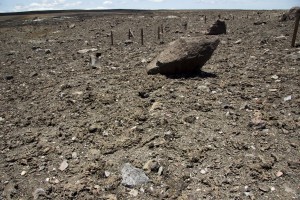
A closer look at the Halemaʻumaʻu Crater overlook. The large boulders were ejected during the 1924 explosion, but the April 28 explosive event carpeted the ground with many large pieces of brown spatter. USGS/HVO photo.
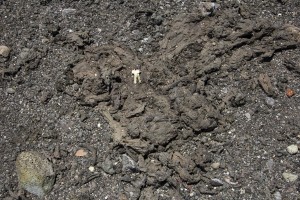
A close look at one of the large pieces of spatter thrown onto the rim of Halemaʻumaʻu Crater by the April 28 explosion (keys are for scale). The spatter hit the ground in a semi-fluid state, deforming on impact. The small, multi-colored particles incorporated in the spatter are fragments of the altered crater wall that collapsed into the lake, while the brown spatter represents fresh lava from the lake. USGS/HVO photo.

The April 28 explosion threw spatter that hit the remaining fencing on the Halemaʻumaʻu overlook, partly burning it (keys for scale). USGS/HVO photo.

Portions of the Halemaʻumaʻu overlook fencing were knocked down by previous explosive events and also by the wind over the past several years. The downed fencing, shown smoldering here, was then ignited by hot spatter from the April 28 explosive event. USGS/HVO photo.
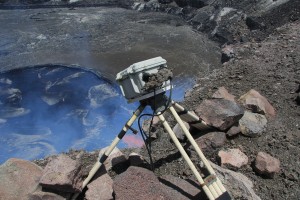
Spatter from the explosion also landed on the Halemaʻumaʻu webcam, melting some of the wire insulation but not enough to interrupt its operation on April 28. USGS/HVO photo.
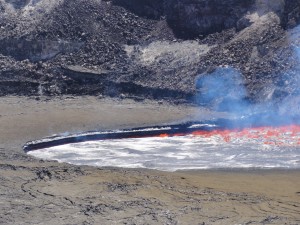
Gas in the lava lake was rapidly released during the April 28 10:20 a.m. explosive event, causing the lava lake surface to drop a few meters (yards). This photo was taken moments after the explosive event, and shows the overhanging ledge of lava along the rim that was exposed as the lava level dropped. USGS/HVO photo.
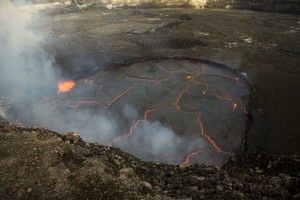
Prior to the explosive event on April 28 at 10:20 a.m., the lake was close to the floor of Halemaʻumaʻu Crater, with spattering along the lake margin. USGS/HVO photo.















